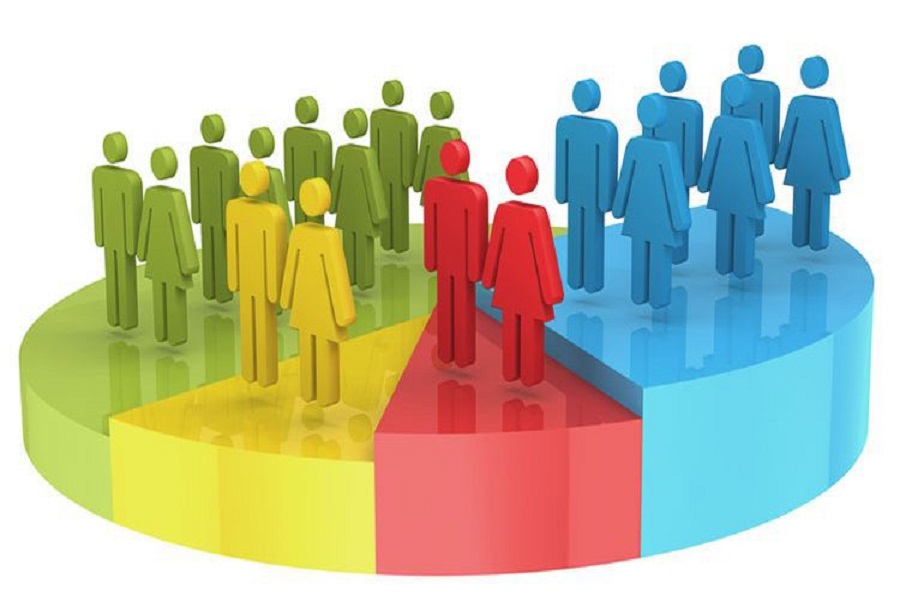Prof. Udaya S Mishra and Balakrushna Padhi
Based on a population count of 42 million in 2011, Odisha’s population is estimated to reach 44 million in 2021. There after, the growth would slow down to reach 45 million plus in another 15 years. At the aggregate level, the percentage of elderly population of 60-plus is supposed to increase from 9.27 percent to 11.8 percent. The population in the age group of 15 – 59 may increase from 61.88 per cent in 2011 to 64.6 per cent in 2021, at the aggregate level.
Odisha will have a feminine-led sex ratio (more women and less men) by 2021. This turn is less due to greater longevity of females thandue to the potential of rising migration of the males to other states.
The broad age composition of the population shows a marked change in the reduced count of child population in ages 0-14 which amounts to less than a quarter share of the population by 2021. This is set to reach less than 20 per cent in another 15 years. Such a declining trend in child population is accompanied by a real explosion of population aged 18+, which is a result of past high fertility as well as the childhood survival gain in the recent past. Rise in this segment of the population can either be a boon or a bane depending on their endowed capabilities. This largely depends on the state’s role to make this group suitable for the emerging labour market of future.
This labour market would be demanding many soft skills in the service provisioning that involves digital efficiency along with communication skills beyond the vernacular. The share of the working-age population touches its peak at 55 percent in 2021, that is set to shrink slowly to reach 51 per cent 2036. So, the state has no escape from raising productivity to cope with the rising dependence of the young and the old on a shrinking workforce.
The share of the elderly is set to double from 9.3 per cent in the last census to 18.1 per cent in 2036. Such a shift is not merely in proportion but amounts to 8 million from the current approximate 5.1 million that needs to be considered within the calculus of provisioning social securities and pensions.
The overall population structure of the state is getting transformed with the consistent decline in fertility levels, which has gone below the replacement level of fertility and the longevity touching the 70s. The population stabilization process in the state has already begun, given the faster decline in its growth rate, which is rapid if audited in every five-year period.
The current population growth rate of 4.1 per cent is expected to decline to 0.1 per cent by 2031-35. Essentially,Odisha’s population is reaching stabilization prior to the middle of this century.
The population age structure of the sate presents an interesting shift in term of systematic cumulative structure conditioned by the momentum of population growth. The current median age of the population which is around 30 years will move to 37 years in a decade and a half from now. Apart from the median marker, the age distributional shift has to be read in terms of the share of population in five-yearly age groups, which is smoothing out systematically to about six to seven percent, excepting beyond the age of 65.
Besides this overall age structure, an interesting aspect of transition that needs attention is the population share of 5-23 years as they constitute the segment for capacity-building. This was at its peak in 2011, which has shown a slow decline but still continues to be more than one-third of the population. Growth of this segment in absolute terms warrants a focus on ensuring health and nutrition alongside the education, skills and vocational training to reap the dividends which otherwise would be a missed
opportunity.
The recent unemployment rate in the state is 7.1 per cent, which is higher than that of the national rate of 6.1%. The youth unemployment rate in the state has increased from 7 per cent in 2011-12 to 24 per centby 2017-18. Further, in Odisha, the outmigration rate is much higher than inward migration. The 2011 Census reflected that, the total inward migration to the state was 8.55 lakh, while the total outmigration was 12.71 lakh. The projected population dynamics of the state offers hope provided the state wakes up to this reality and prepares its future workforce to be qualitative and suiting to the emerging labour market needs with proper policies.
The writers are engaged in academic and research pursuits.

